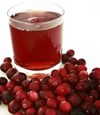Urinary tract infections are the second most common type of infection in U.S. adults, accounting for about 8.1 million visits to health care providers each year. It’s a long-standing adage that drinking cranberry juice can help, but what does the evidence say?
Posted 1/11/2014 by Cornell University, Evidence Based Living

Posted 1/11/2014 by www.extension.org

Being physically active is one of the most important steps people of all ages can take to improve their health. The United States Department of Health and Human Services issued Physical Activity Guidelines for Americans in 2008. The key guidelines for adults include four major points:
Posted 1/4/2014 by Cornell University, Evidence Based Living

My grandmother, a health food fanatic long before it was popular, frequently munched on raw garlic “for medicinal purposes.” So I wasn’t surprised to see the results of a recent systematic review on the potential virtues of eating garlic to lower blood pressure. My grandmother’s seemingly quirky behavior may prove to be healthy ones after all. High blood pressure is clearly something to avoid given its link to heart disease and stroke. And it affects a lot of people: according to the American Heart Association, one out of every three adults has high blood pressure. Could garlic be the answer?
Posted 1/4/2014 by Cornell University, Evidence Based Living

Here at EBL, we’ve spent plenty of time writing about the evidence on obesity - and for good reason: millions of Americans are considered obese, which leads to diseases like diabetes, heart disease and cancer.
While obesity is proven to be dangerous, in the past some researchers thought there was a cohort of obese individuals – those without metabolic problems – that didn’t suffer from the negative health effects of obesity. Now there is new evidence on the topic.
Posted 12/28/2013 by www.extension.org

Take a deep breath - the holidays (and the endless onslaught of food) are now behind us. But don't get too comfortable; we're just days away from 2014, and like countless other Americans, you're probably making some New Year's resolutions. As with all resolutions, good intentions alone aren't enough, especially if you're trying to get healthy or lose weight (hence why the gym tends to empty out sometime mid-February). So what can you do to make changes last well into the New Year?
Posted 12/28/2013 by Cornell University, Evidence Based Living

If I come home in a bad mood, my husband usually suggests I head out for a run or over to the pool for a swim. That’s because he knows that exercise helps to improve my frame of mind. But does it also help improve the symptoms for people suffering from clinical depression?
Posted 12/21/2013 by Cornell University, Evidence Based Living

The holiday season is officially here – with its decorated cookies, happy hours and workplace lunches. We’ve already established that gaining weight has a negative impact on your health. So what can you do to avoid putting on the pounds at this time of year?
It turns out, the evidence shows there are some steps you can take to avoid gaining weight over the holidays.
Posted 12/21/2013 by http://www.nhlbi.nih.gov

Food doesn’t have to be high in fat to be good. Get the whole family to help slice, dice, and chop, and learn how to cut fat and calories in some foods. You’d be surprised how easy heart healthy cooking and snacking can be.
On this page you’ll find ideas for healthy snacks, tips for healthy cooking, and food options with less fat and fewer calories.
Posted 12/14/2013 by University of Nebraska, Lincoln Extension

If holiday eating leaves you worried about foods high in fat and calories or overeating in general, here are some tips to help enjoy the holidays without increasing your waistline. Making recipes healthier may be easier than you think. Make simple ingredient substitutions or adjustments to create healthier recipes without sacrificing flavor and enjoyment. Many of the traditional foods served during the holidays start out healthy. It’s what is added to them and how they are prepared that add extra calories and fat.
Posted 12/13/2013 by National Heart, Lung, Blood Institute

Buying healthy foods for your family is easier when you know what types of food to shop for in the store. Take a shopping list with you to stay on track. Look at the Nutrition Facts label to find healthy choices.
Once you know how to use the Nutrition Facts label, be sure to read them as you shop. Look at the serving size and servings per container of the foods you may buy. Compare the total calories in similar products and choose the lowest calorie items.
| Previous Articles | More Articles |






